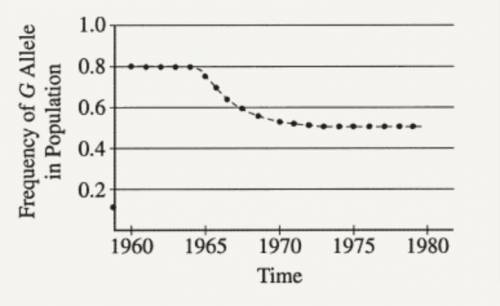
Biology, 19.04.2021 04:10 gabbypittman20
A moth's color is controlled by two alleles, G and g, at a single locus. G (gray) is dominant to g (white). A large population of moths was studied, and the frequency of the G allele in the population over time was documented, as shown in the figure below. In 1980 a random sample of 2,000 pupae was collected and moths were allowed to emerge. Assuming that the population was in Hardy-Weinberg equilibrium for the G locus, what percentage of the gray moths that emerged in 1980 was heterozygous? (The Answer is 67%, can you please explain why it's 67%? thank you!!)


Answers: 3


Other questions on the subject: Biology


Biology, 22.06.2019 05:30, sandygarcia65
“in 1492 columbus sailed the ocean blue” is an example of: a)explicit memory b) procedural memory c) semantic memory d)episodic memory
Answers: 3

Biology, 22.06.2019 06:10, thompsonhomes1
The normal shape of an enzyme is as shown in structure a. if the enzyme’s shape changes to that shown in structure b, what are two consequences of this change?
Answers: 1

Biology, 22.06.2019 11:00, taterbug3859
Every early childhood education program should develop a
Answers: 1
You know the right answer?
A moth's color is controlled by two alleles, G and g, at a single locus. G (gray) is dominant to g (...
Questions in other subjects:

Business, 17.12.2020 16:50


Social Studies, 17.12.2020 16:50






Mathematics, 17.12.2020 16:50



